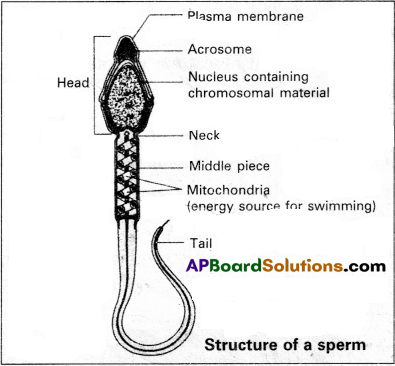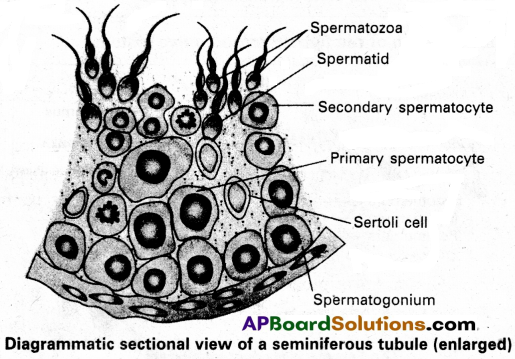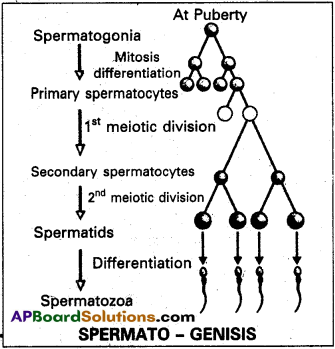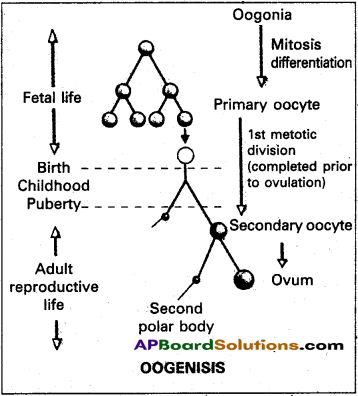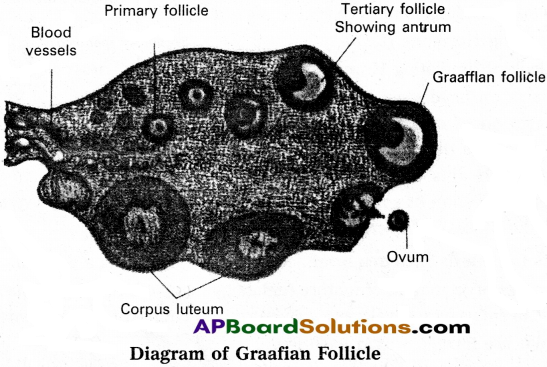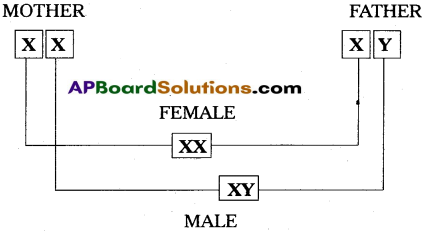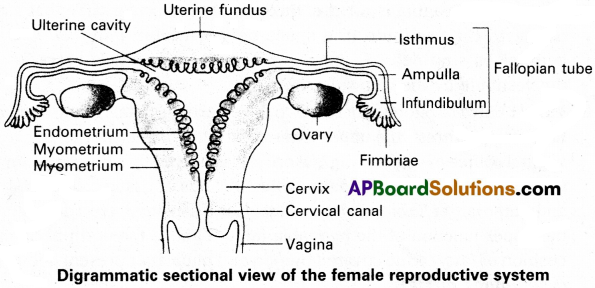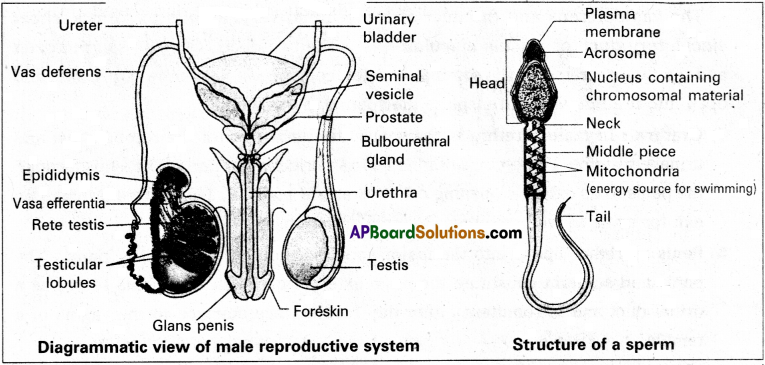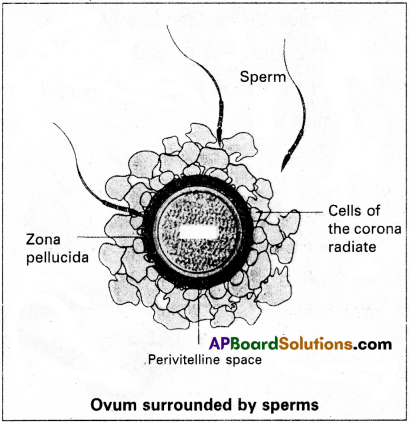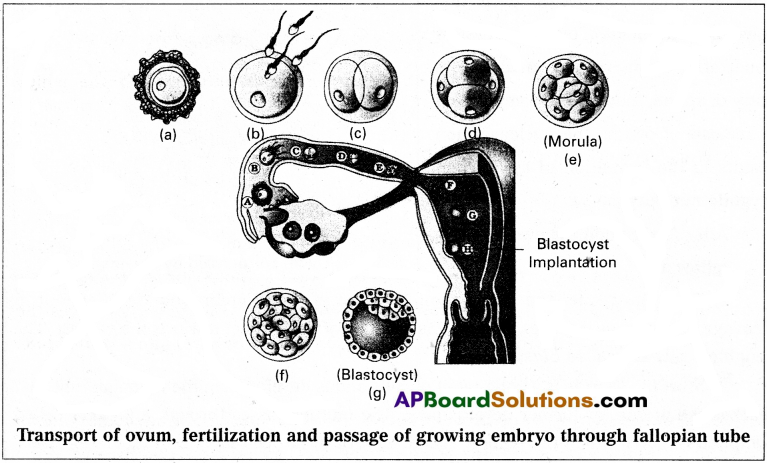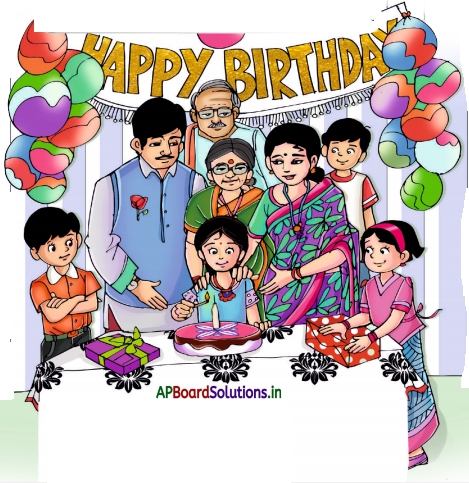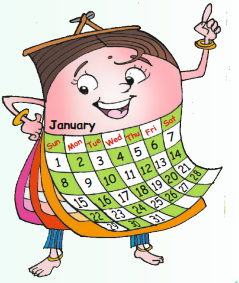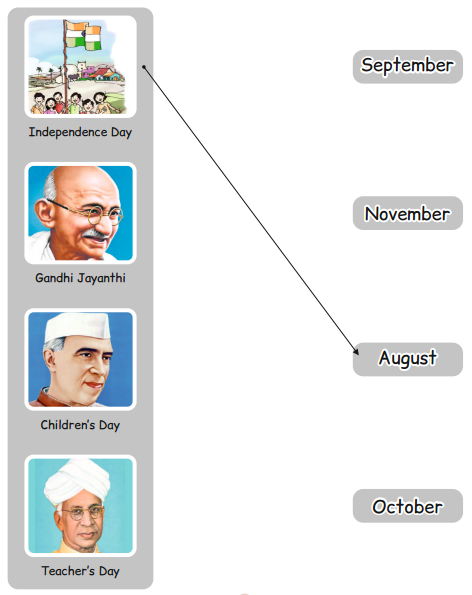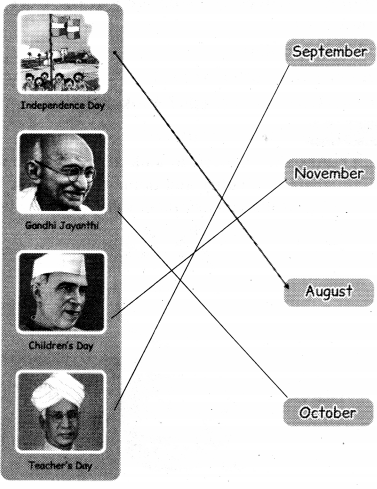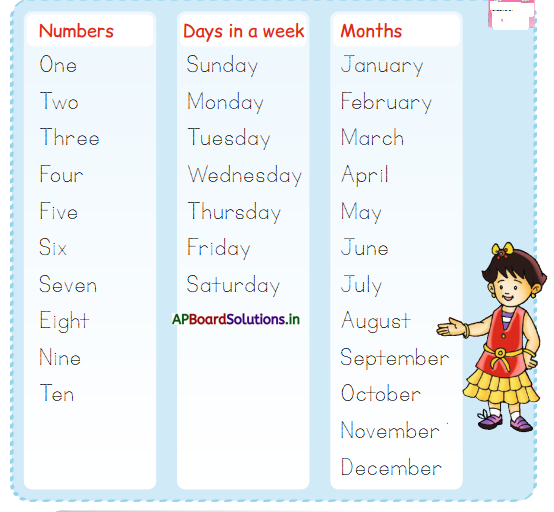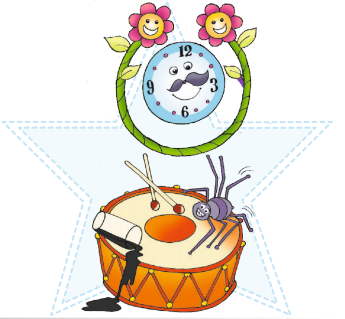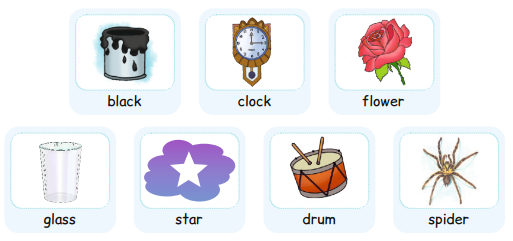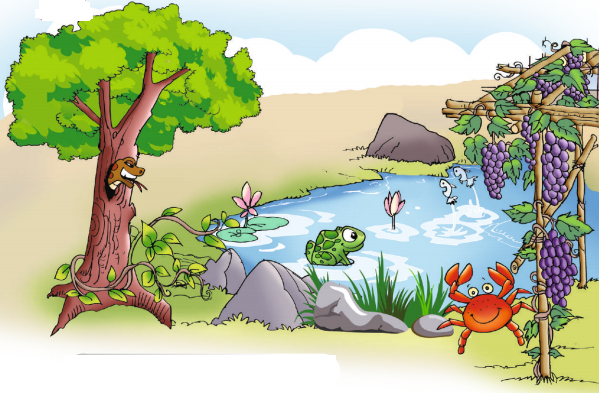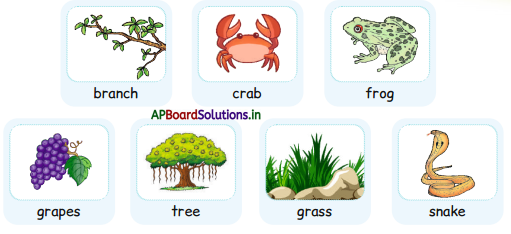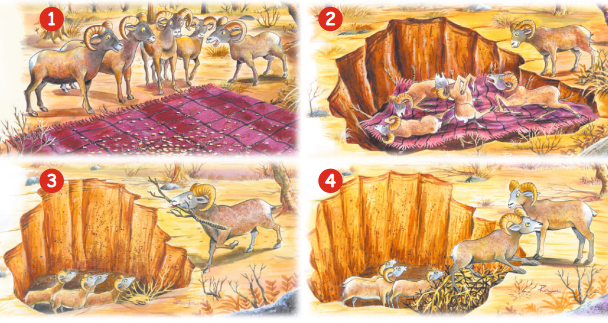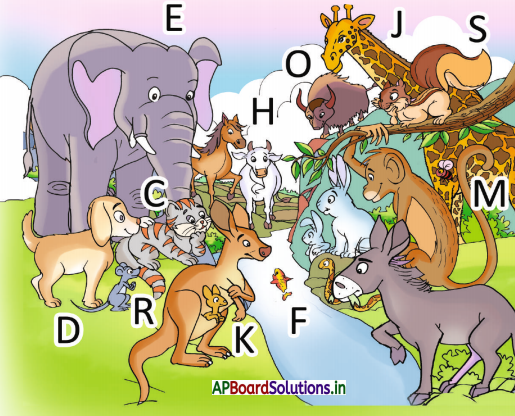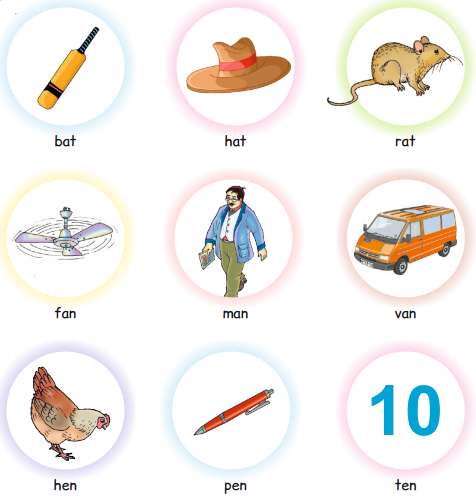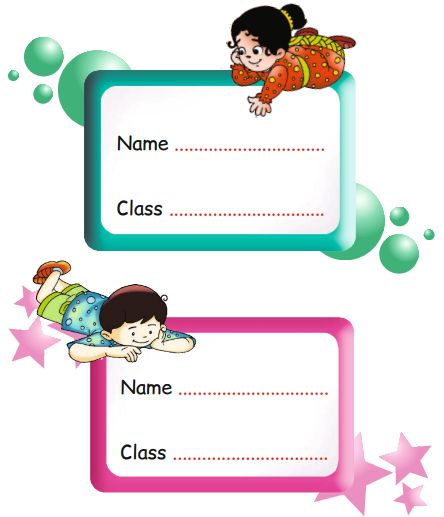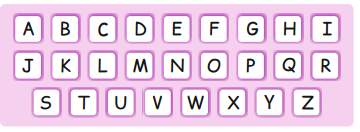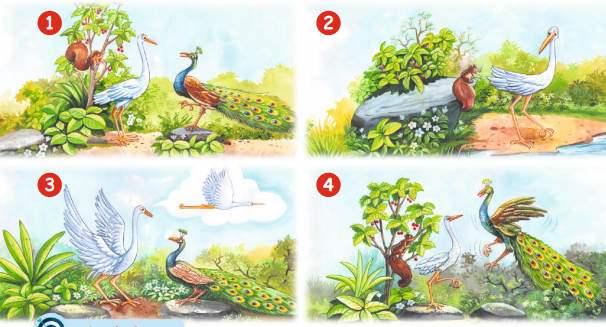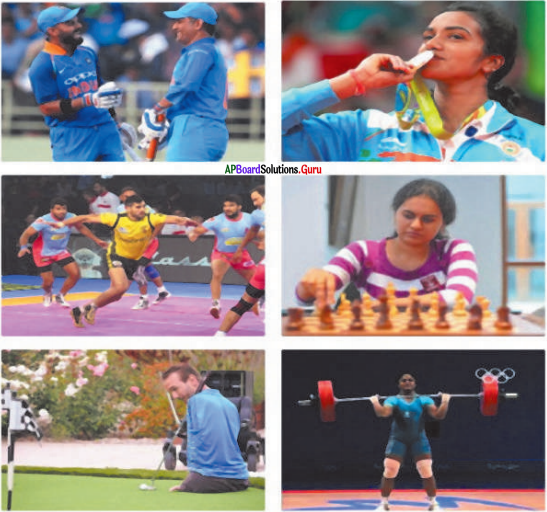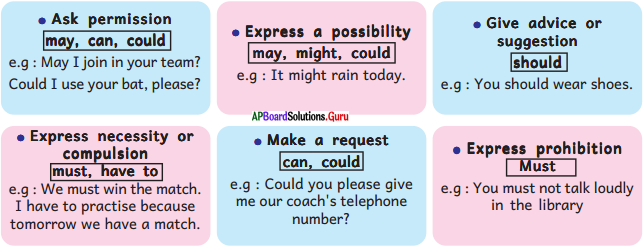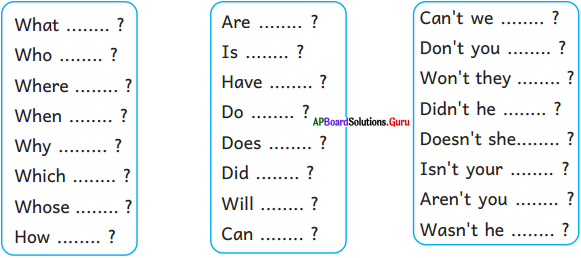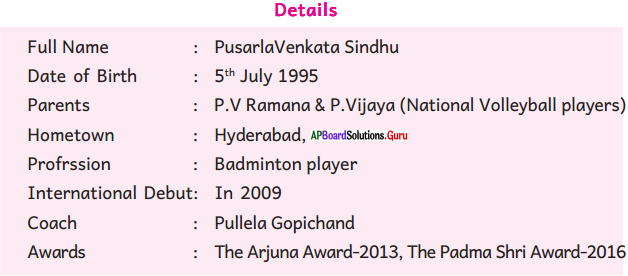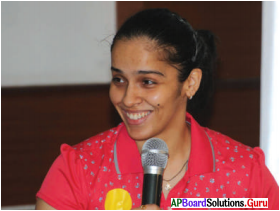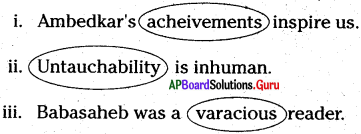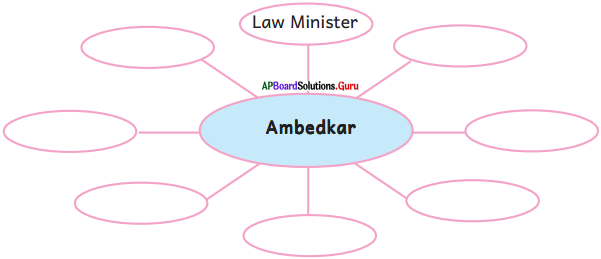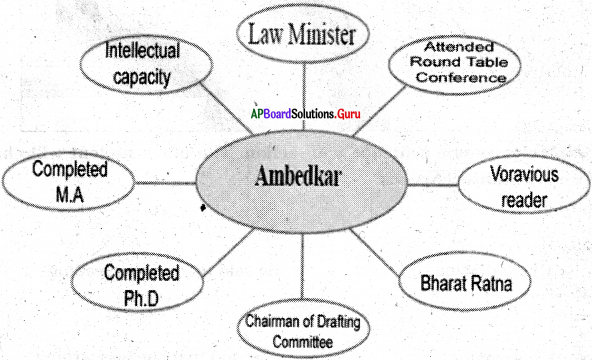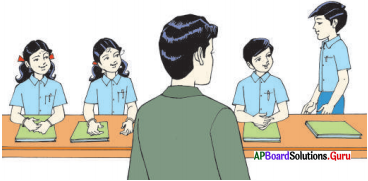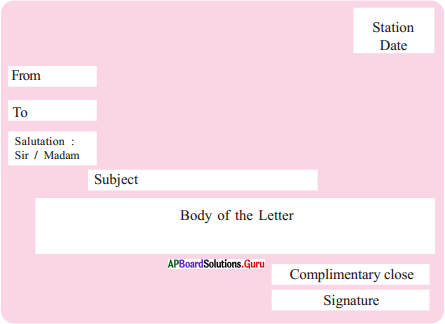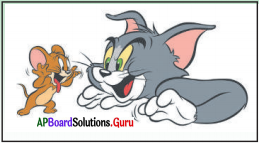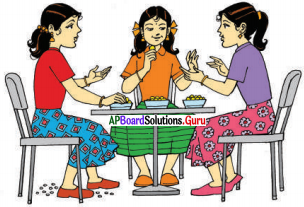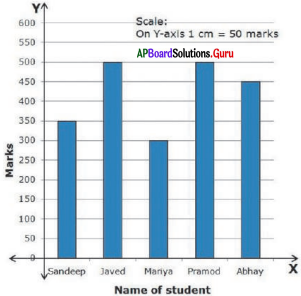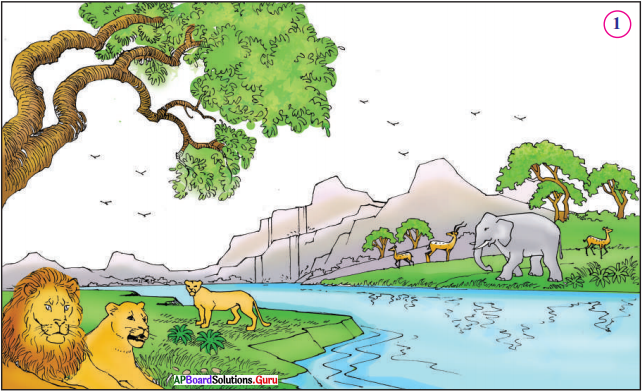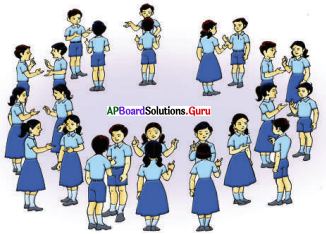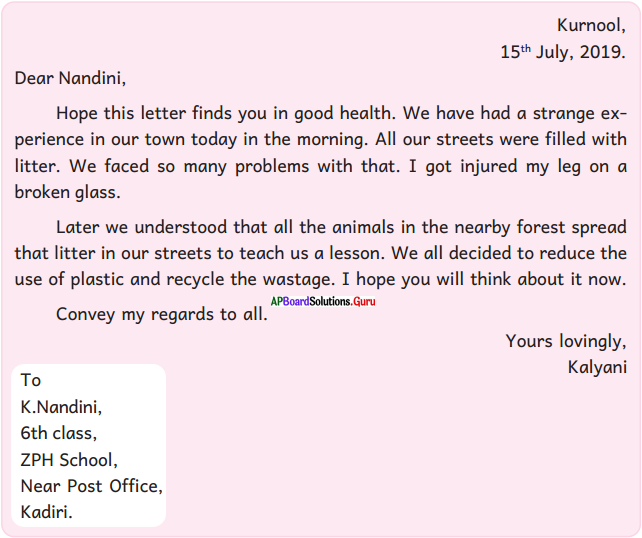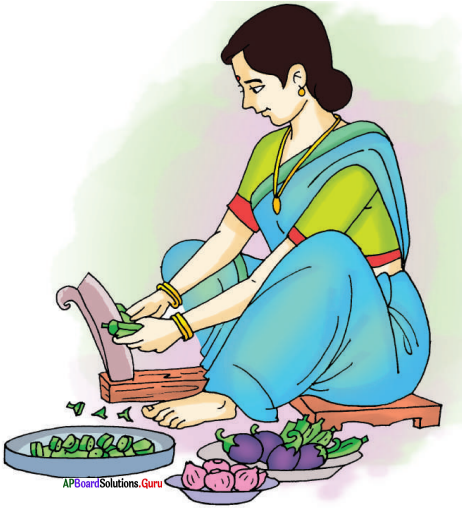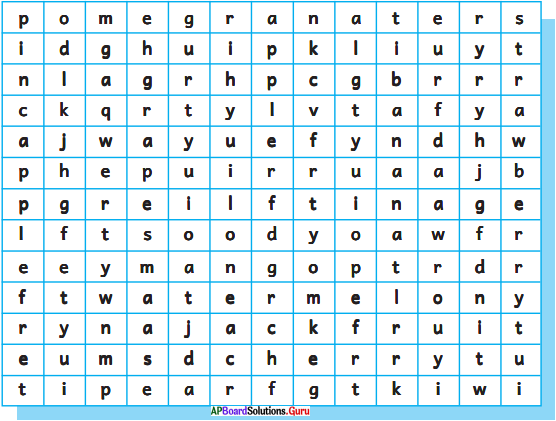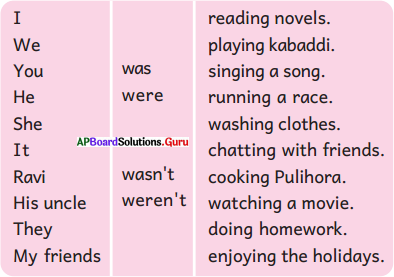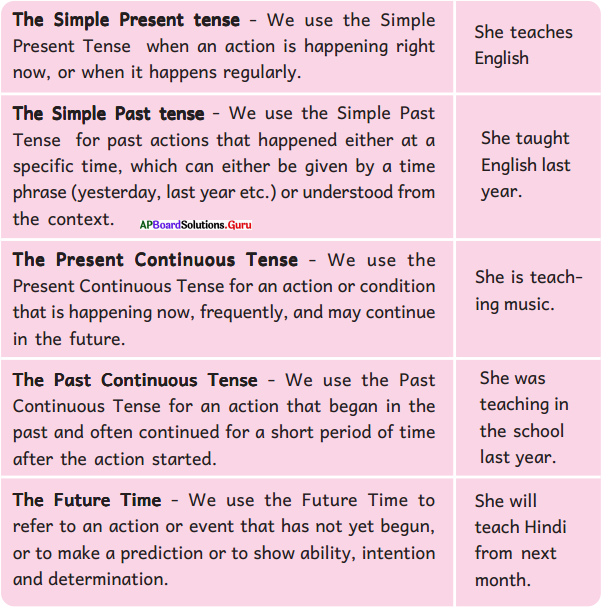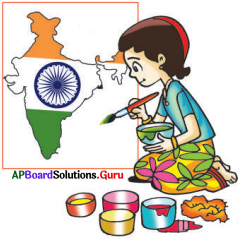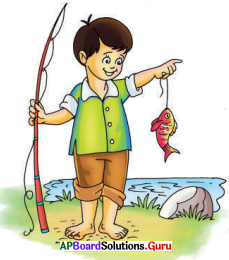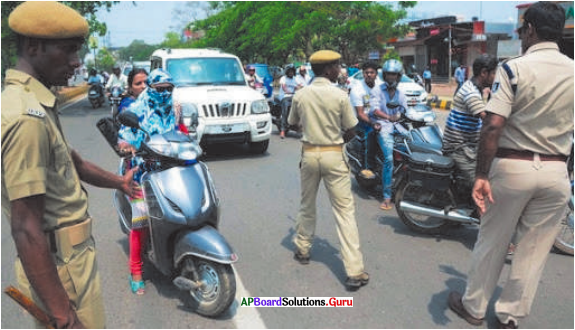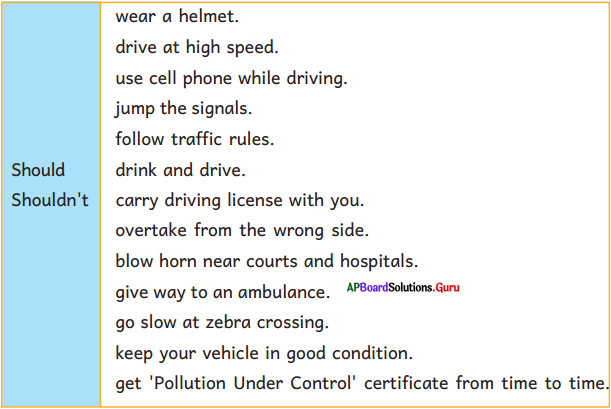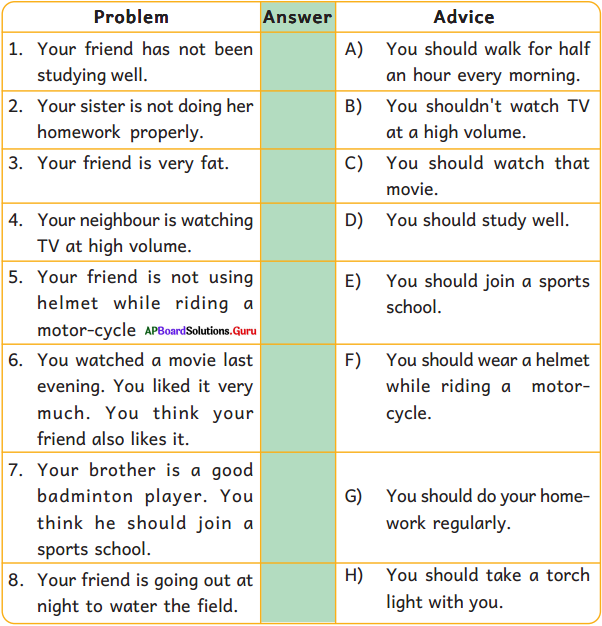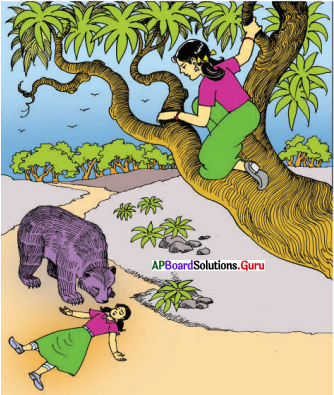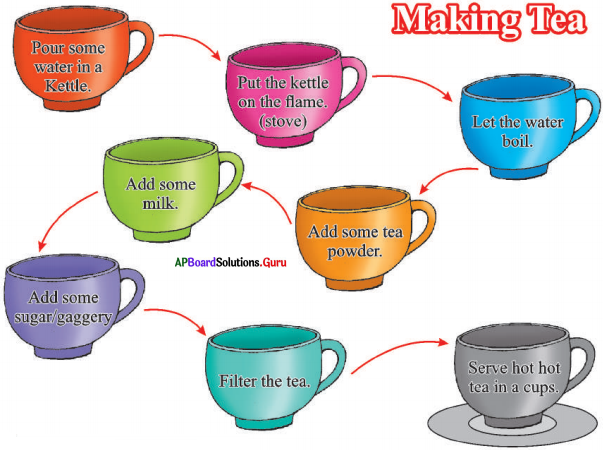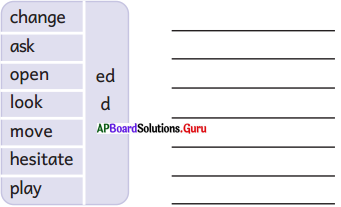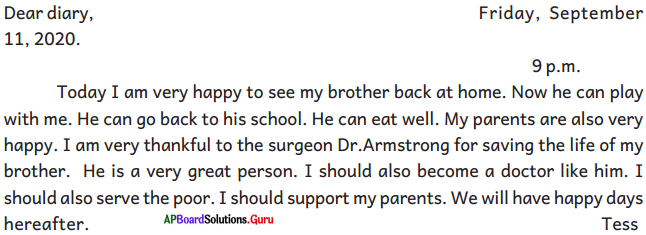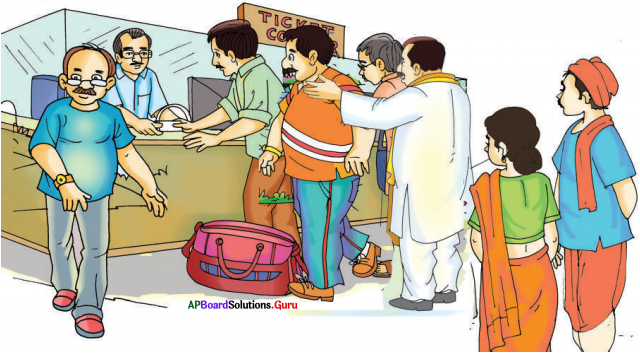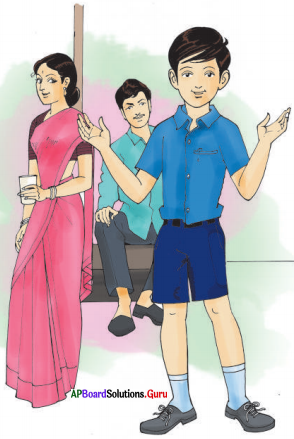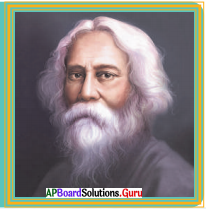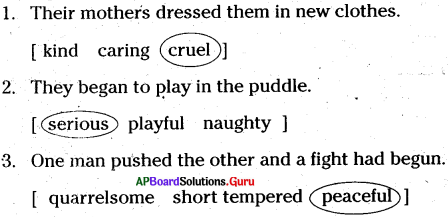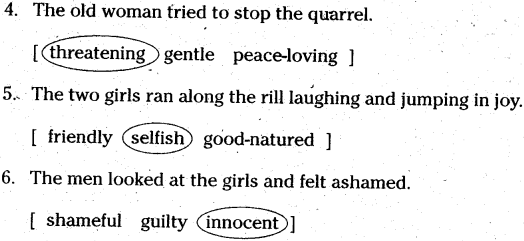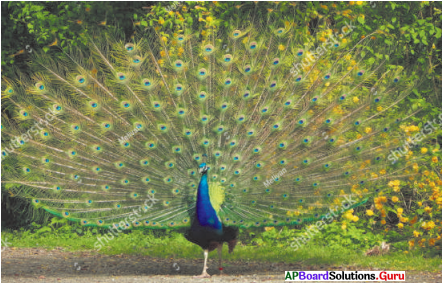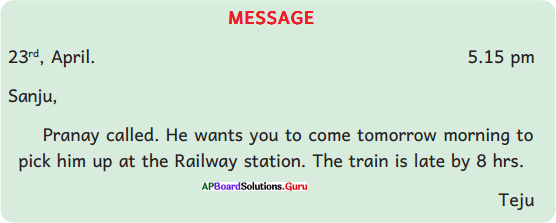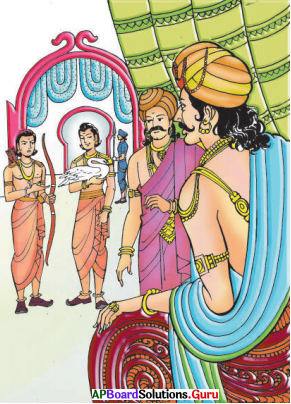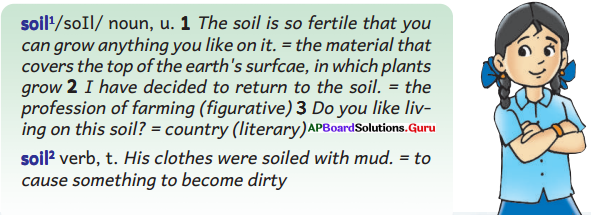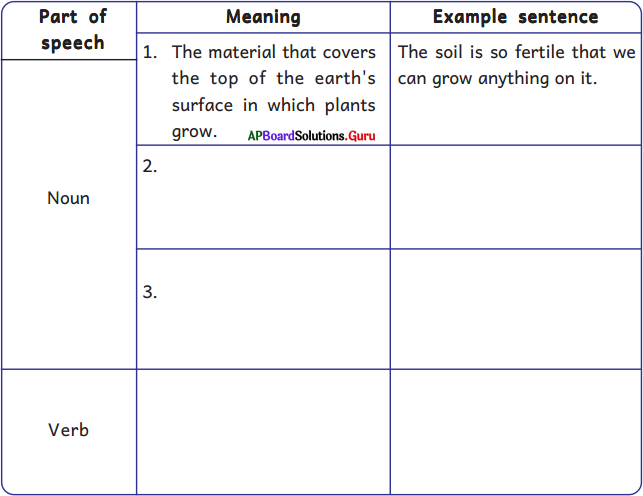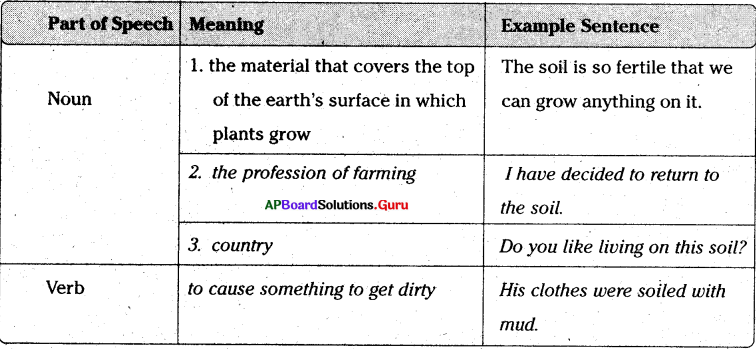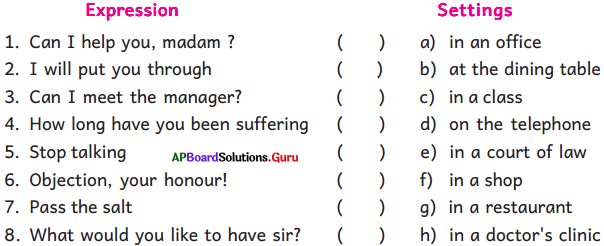AP State Syllabus 6th Class English 1st Lesson Important Questions and Answers Clever Tenali Ramakrishna
Reading Comprehension Textual Passages
Question 1.
Read the following excerpt carefully.
Chitra Varma was the most famous painter in Srikrishna Devaraya’s court. The emperor was pleased with Chitra Varma’s paintings. People also liked his paintings.
One day Chitra Varma was busy painting. Then emperor Srikrishna Devaraya happened to visit him along with his courtiers, minister and his jester, Tenali Ramakrishna.
Chitra Varama : Welcome, Your Highness.
Srikrishna Devaraiya : Oh! What a beautiful picture! It looks so natural.
The courtiers : Yes, Your Majesty, really it is wonderful.
Srikrishna Devaraiya : No painter on earth can compete with you, Chitra Varma. You are a unique painter. You shall be rewarded. What do you say Ramakrishna?
Ramakrishna : Yes, My Lord! Such an artist he is! He deserves your encouragement.
Now, answer the following questions.
1. Who was Chitra Varma?
Answer:
The most famous painter in Srikrishna Devaraya’s court
2. What was Chitra Varma doing when the emperor visited him?
Answer:
Chitra Varma was busy painting.
3. Who were with the emperor when he visited Chitra Varma?
Answer:
His courtiers, minister and his jester, Tenali Ramakrishna.
4. What does ‘Your Majesty’ refer to?
Answer:
It refers to the emperor.
5. What were the emperor’s impressions on seeing the picture?
Answer:
The emperor felt that it was a very beautiful picture and it looked so natural.
6. What did Chitra Varma deserve according to Ramakrishna?
Answer:
He deserved the emperor’s encouragement.
7. What did the courtiers say about the picture?
Answer:
It was really wonderful.

Question 2.
Read the following excerpt carefully.
Srikrishna Devaraya : That’s great! Let him ask for anything. He shall get whatever he wants.
Chitra Varama : Thank you very much, Your Majesty. It’s all your affection and encouragement.
Srikrishna Devaraiya : Your presence in the council of advisors will be a boon to the Vijayanagar empire.
Chitra Varama : I am afraid I am not, Your Majesty! Your blessings are worth the strength of a thousand elephants.
Srikrishna Devaraiya : No, a great painter like you should be rewarded in a fitting manner.
Chitra Varama : Your Highness is merciful.
Srikrishna Devaraiya : (Thinking for a while, he snapped his fingers) You will be my chief advisor from today onwards.
Chitra Varama : What! I cannot understand, how I am blessed, Your Majesty.
Ramakrishna : Excuse me, Your Majesty! He is talented in painting but… would it be a right decision to make him…?
Srikrishna Devaraiya : The emperor of Vijayanagar knows what is right. Minister, please make an announcement that Chitra Varma will be the chief advisor hereafter in our court.
Minister : Yes, Your Majesty. I will piake an announcement in our empire.
Now, answer the following questions.
1. What was boon to the Vijayanagar empire according to the emperor?
Answer:
Chitra Varma’s presence in the council of advisors
2. What was Tenali Ramakrishna’s reaction when the emperor announced Chitra Varma as the chief advisor?
Answer:
Tenali Ramakrishna said that Chitra Varma was only a great painter but he was not fit for the post of the chief advisor.
3. What was the worth of the emperor’s blessings?
Answer:
They were worth the strength of a thousand elephants.
4. What did the emperor ask the minister to do?
Answer:
To make an announcement about Chitra Varma’s appointment as the chief advisor
5. Do you think the decision of the emperor was right?
Answer:
No, I do not think so.
Question 3.
Read the following passage carefully.
But Chitra Varma’s plans and actions led to confusion everywhere. He had never handled the matters of court before. His decisions were irrelevant. His conclusions lacked sense. With this, the people grew impatient. Yet the emperor continued to support him. The elders of the empire decided to seek help from the court’s jester Tenali Ramakrishna in this matter. Tenali Ramakrishna told them that he Had an idea and assured them not to worry.
Now, answer the following questions. ,
1. Why did Chitra Varma’s plans and actions lead to .confusion?
Answer:
Because he was not good at advising.
2. How were the decisions of Chitra Varma?
Answer:
Irrelevant
3. How were his conclusions?
Answer:
His conclusions lacked sense.
4. Why did the people gjrow impatient? ‘
Answer:
Because of Chitra Varma’s plans, actions, decisions and conclusions
5. What did the elders of the empire decide to do?
Answer:
To seek help from the court’s jester Tenali Ramakrishna in this matter

Question 4.
Read the following excerpt carefully.
One day Tenali Ramakrishna approached the emperor Srikrishna Devaraya.
Ramakrishna : Your Majesty! You know that I have been blessed with a baby boy. I will be happy if you visit my house for my boy’s naming ceremony tomorrow.
Srikrishna Devaraya : 0! Wonderful! It’s my pleasure, Ramakrishna. (The emperor visited Ramakrishna’s house the next day.)
Ramakrishna : (with a bouquet of flowers in his hands) Welcome, Your Majesty. We are grateful for your visit. Please bless my son.
Srikrishna Devaraya : Deerghaayushman bhava. This is a token of my love. (The emperor puts a gold chain around the baby’s neck.)
Ramakrishna : Thank you very much Your Majesty. You are requested to join for lunch.
Srikrishna Devaraya : (Afterhaving tasted) Oh! Water! Water! Give me water. Urgent.
Courtiers : Oh..God, Water! Water!!…
Srikrishna Devaraya : Hey Ramakrishna, what’s this? Horrible dishes!
Courtier 1 : It’s too spicy!
Courtier 2 : Too salty too!
Courtier 3 : Not cooked properly it is undercooked!
Srikrishna Devaraya : (angrily) Who cooked this? Is this the way to cook food?
Courtiers : Do you want all of us to die?
Now, answer the following questions.
1. What did Ramakrishna invite the emperor for?
Answer:
To bless his newly born son on the naming ceremony
2. What was Ramakrishna grateful for?
Answer:
For the emperor’s visit to his house
3. What did Ramakrishna request the emperor for?
Answer:
For lunch
4. How were the dishes?
Answer:
Horrible
5. Did Ramakrishna want them all to die?
Answer:
No.
Question 5.
Read the following excerpt carefully.
Ramakrishna : (with folded hands) Pease forgive me sir, let me introduce the cook to you.
Srikrishna Devaraya : Bring him at once or you will be punished.
Ramakrishna : (presenting a carpenter) This is- the best carpenter in Vijayanagar. Ho is a brilliant worker. I gave him the task of cooking for today.
Srikrishna Devaraya : Are you crazy, Ramakrishna? He may be an excellent carpenter. How can he be a cook?
Ramakrishna : Pardon me, Your Majesty. If a painter can be’your chief advisor,’ why can a carpenter not be a cook?
Srikrishna Devaraya : (Lost in thoughts shaking his head slowly) Ramakrishna, you opened my eyes. You made me realize my mistake.
Chitra Varama : I was afraid to say ‘No’, Your Majesty! I am very thankful to you if I am sent back to my previous job.
Srikrishna Devaraiya : Minister, make necessary arrangements to send him back.
Ramakrishna : Thank you very much, Your Majesty.
All the people assembled there hailed Tenali Ramakrishna for his presence of mind.
Now, answer the following questions. .
1. Why did Ramakrishna ask the emperor to forgive him? ,
Answer:
For serving horrible dishes
2. Who cooked food and dishes for the naming ceremony?
Answer:
A carpenter
3. Who was ‘the painter’ referred to here?
Answer:
Chitra Varma
4. What was the mistake done by Srikrishna Devaraya?
Answer:
He appointed Chitra Varma the chief advisor.
5. What was the previous job of Chitra Varma?
Answer:
He was a painter.
6. Why did people hail Ramakrishna?
Answer:
For his presence of mind ,
Read it yourself
Question 6.
Read the following excerpt carefully.
Nasruddin had a habit of praying aloud. Every day he used to pray for the same thing -irand in the same way. His neighbour wondered about this.
Nasruddin : Oh God! Please give me one thousand gold coins. If you give,me one coin lesser, I won’t accept the money.
Neighbour : (To himself) I will throw him just 999 coins and see what he does. (He throws a bag of999 coins)
Nasruddin : A bag of gold coins! Oh! God has answered my prayers. Let me count ‘ once. There are 999 only! ”
Neighbour : Hey Nasruddin! You are looking very happy.
Nasruddin : Yes. God has heard my prayers (looks into the sky) Oh God ! Thank you for the coins.
Now, answer the following questions.
1. What did Nasruddin pray for daily?
Answer:
For one thousand gold coins
2. Why did the neighbour throw a bag of 999 coins?
Answer:
To see whether Nasruddin would take the coins or not if there were no one thousand coins
3. How many coins were there in the bag?
Answer:
999
4. What made Nasruddin happy?
Answer:
Getting 999 gold coins
5. Who threw the coins?
Answer:
The neighbour

Question 7.
Read the following excerpt carefully.
Neighbour : How did you accept them?
Nasruddin : Why should I reject them?
Neighbour : Because they are not 1000.
Nasruddin : How do you know that?
Neighbour : It’s I who have thrown them into your house.
Nasruddin : Who said that this is your money? This money has been sent to me by God.
Neighbour : It was I who threw the money into your house.
Nasruddin : God chose you to do his work. Now please go away.
Neighbour : I won’t go anywhere without the money.
Nasruddin : It’s not your money, I tell you again and again.
Neighbour : OK. Let’s meet in the court.
Now, answer the following questions.
1. How many coins were there?
Answer:
999
2. How did the neighbour know that they were not 1000?
Answer:
The neighbour threw the coins into Nasruddin’s house so he knew that.
3. Whose money was it really?
Answer:
The neighbour’s
4. Why did the neighbour throw the money?
Answer:
To see whether Nasruddin would take the coins or not if there were no one thousand coins
5. Who wanted to go to the court?
Answer:
The neighbour
Question 8.
Read the following excerpt carefully.
Nasruddin : I am not feeling well. I can’t walk all the way to the court.
Neighbour : Then you can have my horse to ride on.
Nasruddin : But, I can’t appear before the judge dressed in these old robes., and I have nothing else to wear.
Neighbour : Don’t worry about the clothes, I will lend you my new coat.
Nasruddin : OK., then I will go with you. (At the court)
Neighbour : Your honour, listen to my story., this man prays loudly every morning and ..(he told the whole story).
Judge : (to the neighbour) so the bag of money which Nasruddin found is yours. .
Neighbour : That’s the truth…your honour.
Now, answer the following questions.
1. What was the first objection of Nasruddin to go to court?
Answer:
He was not feeling well. He also said that he was not able to walk all the way to the court.
2. Why did the neighbour lend his new coat to Nasruddin?
Answer:
Because Nasruddin did not like to appear before the judge in his old robes.
3. Who told the whole story to the judge?
Answer:
The neighbour
4. Who found the bag of money?
Answer:
Nasruddin
5. Whose money was it really?
Answer:
The neighbour’s

Question 9.
Read the following excerpt carefully.
Nasruddin : Don’t believe him, your honour, he always claims other people’s – property as his own.
Neighbour : No, sir, he is lying.
Nasruddin : I won’t be surprised if he says that the horse on which he rode here is his. .
Neighbour : Yes, sir, it is mine only.
Nasruddin : Your honour., next, he will say that this coat is also his coat.. Neighbbur : Yes, your honour, it is mine only. He knew it very well.
Nasruddin : Do you see, how it is, your honour..?
Judge : I do indeed. It is clear to me that the bag of money too is his.
Neighbour : No. It is mine! ? Oh God .. I’m ruined.
Judge : The case is dismissed.
Neighbour : I have become mad. Nasruddin, please have mercy on me. You know ’ I am not a very rich man.
Nasruddin : You should have thought of that earlier. Anyway, here’s your money, your coat and your horse.
Neighbour : l am very sorry. I will never interfere in your business again. Nasruddin : That’s good., (folds hands, looks into sky) Oh God., please send me a thousand gold coins..
Neighbour : Oh my God (runs away)
Now, answer the following questions.
1. Who claims for other people’s property according to Nasruddin?
Answer:
The neighbour
2. Whom does the horse belong to?
Answer:
To the neighbour
3. What was the decision of the judge?
Answer:
He dismissed the case.
4. Who begged for mercy?
Answer:
The neighbour
5. Why did Nasruddin pray to God?
Answer:
He prayed to God for one thousand gold coins.
Unseen Comprehension
Question 10.
Read the following passage.
Hari and Ravi were brothers. Their father was a rich man. Their house was very big. There were many big rooms in their house. There was a garden around the house. There were many plants and trees in the garden. Hari and Ravi played in the garden. There were plenty of flowers and fruits in the garden. The fruits were very tasty. Hari and Ravi ate the fruits every day. Don’t you think they were lucky boys ? Yes, they were. But they were lazy too.
Now, answer the following questions.
1. How were the rooms in the house?
Answer:
The rooms were big.
2. What were there in the garden?
Answer:
There were many plants and trees in the garden. Choose the correct answer from the choices given.
3. Where did Hari and Ravi play?
A) in tjie playground
B) in their garden
C) in front of the house
Answer:
B) in their garden
4. What was there around the house?
A) houses
B) tree
C) garden
Answer:
C) garden
5. Winch of the following statements is True?
A) There were a few rooms in their house.
B) Hari and Ravi were friends.
C) Hari and Ravi were lucky but they were lazy too.
Answer:
C) Hari and Ravi were lucky but they were lazy too.

Question 11.
Read the following passage.
Once there were three friends. They had learnt how to perform magic. One day they decided to perform magic in a nearby village. To reach the village they had to cross a forest. Walking through the forest, they talked aljout the tricks they knew. At noon they sat under a tree. Suddenly, one of them saw some broken bones on the ground:
“I am going to put these bones together and make a complete skeleton!” He said a little prayer. The broken bones came together. It was the skeleton of a big tiger.
“I can give it flesh and blood !” said the second friend. He said a prayer and flesh and muscle covered the skeleton. “I can breathe life into it,” said the third friend.
“The tiger will be happy because we have given it life again!,” said the friends. In a moment they heard a loud roar. The tiger was alive. It jumped on the three friends and ate them up.
Now, answer the following questions.
1. Where did they sit at noon?
Answer:
At noon they sat under a tree.
2. What did the tiger do to the friends?
Answer:
The tiger jumped on the three friends and ate them up.
Choose the correct answer from the choices given.
3. As they walked through the forest, they talked about ………..
A) the tricks
B) the village
C) the forest
Answer:
A) the tricks
4. ………. gave flesh and blood to the tiger.
A) The second friend
B) The third friend
C) The first friend
Answer:
A) The second friend
5. Which of the following statements is True?
A) The three friends went to the forest to perform the tricks.
B) The first friend gave life to the tiger.
C) They wanted to perform the tricks in a nearby village.
Answer:
C) They wanted to perform the tricks in a nearby village.
Interpretation Of Non-Verbal Information
Question 1.
Study the following table. It gives the number of boys and girls in classes V, VI and VII.
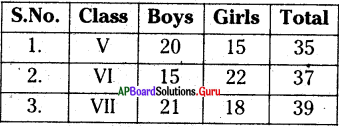
Now, answer the following questions.
1) Which class has 20 boys?
Answer:
Class V
2) How many girls are there in class VI?
Answer:
22
Choose the correct answer from the choices given.
3) Which class has 21 boys?
A) Class V
B) Class VI
C) Class VII
Answer:
C) Class VII
4) Which class has the roll 37?
A) Class V
B) Class VI
C) Class VII
Answer:
B) Class VI
5) Which of the following statements is True?
A) Class VI has 18 girls.
B) Class VII has 20 boys.
C) The total number of boys and girls in the Class V is 35.
Answer:
C) The total number of boys and girls in the Class V is 35.
Vocabulary
I. Choose the words with similar meanings (Synonyms) from the list given to the words underlined.
1) [dwelled, honoured, ordinary, particular]
You are a unique (a) nainter. You shall be rewarded (b).
Answer:
a) particular
b) honoured
2) [foolish, correct, skillful, lazy]
Excuse me, Your Majesty! He is talented (a) in painting but ………… would it be a right(b) decision to make him …..?
Answer:
a) skillful
b) correct
3) [depress, curious, met, followed]
Tenali Ramakrishna told them that he had an idea and assured them not to worry (a). One day Tenali Ramakrishna approached (b) the emperor Srikrishna Devaraya.
Answer:
a) depress
b) met
4. [gathered, admired, gifted, searched]
All the people assembled (a) there hailed (b) Tenali Ramakrishna for his presence of mind.
Answer:
a) gathered
b) admired

II. Write, the opposite words of the underlined Words.
1. Yes, Your Majesty, really (a) it is wonderful (b).
Answer:
a) unlikely/falsely
b) ordinary/average/common
2. He deserves (a) your encouragement (b).
Answer:
a) undeserves
b) discouragement
3. But Chitra Varma’s plans and actions led to confusion (a) everywhere. He had never handled the matters of court before (b).
Answer:
a) clarity
b) after
4. O ! Wonderful (a) ! It’s my pleasure (b) Ramakrishna.
Answer:
a) Unamazing
b) sadness / sorrowfulness
III. Fill in the blanks with the right form of the words given in the brackets.
1. Oh ! What a ______ (a) (beautiful/beauty) picture ! It looks so ______ (b) (natural/naturally).
Answer:
a) beautiful
b) natural
2. No painter on earth can. You are a unique ______ (a) (compete/competition) with you, Chitra Varma. You are a unique ______ (b) (painter/paint).
Answer:
a) compete
b) painter
3. Your ______ (a) (presence/present) in the council of advisors will be a boon to the Vijayanagar ______ (b) (empire/emperor).
Answer:
a) presence
b) empire
4. But Chitra Varma’s plans and actions led to ______ (a) (confuse/confusion) everywhere. He had never ______ (b) (handled/handle) the matters of court before.
Answer:
a) confusion
b) handled

IV. Complete the following words using “au, ea, eo, io, ou or ue”.
a) fam_ _s
b) c_ _rt
c) p_ _pie
d) be_ _tiful
e) r_ _lly
f) uniq _ _
g) enc_ _ragement
h) gr_ _t
i) y_ _r
j) affect_ _n
k) c_ _ncil
l) th_ _sand
Answer:
a) famous
b) court
c) people
d) beautiful
e) really
f) unique
g) encouragement
h) great
i) year
j) affection
k) council
l) thousand
V. Complete the following words with the suitable suffixes given in the brackets.
1) Chitra Varma was the most famous paint ______ (er/or) in Srikrishna Devaraiya’s court. The emper ______ (or/er) was pleased with Chitra Varma’s paintings.
2) Your pres ______ (ence/ance) in the council of advis ______ (ors/ers) will be a boon to the Vijayanagar empire.
3) His decisions were irrelev ______ (ant/ent). His conclu ______ (sions/tions) lacked sense.
Answer:
1) painter, emperor
2) presence, advisors
3) irrelevant, conclusions

VI. Identify the wrongly spelt word and write its correct spelling in the space provided.
1) painter, mistake, necesary, thankful
Answer:
necessary
2) previous, arangement, afraid, carpenter
Answer:
arrangement
3) emperor, courtier, token, horible
Answer:
horrible
4) briliant, introduce, forgive, dish
Answer:
brilliant
5) request, mercyful, advisor, announcement
Answer:
merciful
VII. Arrange the following words under the correct headings.
1. [bridegroom, gatekeeper, furniture, food]
| Persons | Things |
| 1) bridegroom | 1) furniture |
| 2) gatekeeper | 2) food |
2. [lily, onion, tomato, lotus]
| Flowers | Vegetables |
| 1) lily | 1) onion |
| 2) lotus | 2) tomato |
3. [doctor, refrigerator, nurse, air conditioner]
| Persons | Things |
| 1) doctor | 1) refrigerator |
| 2) nurse | 2) air conditioner |
4. [palace, queen, auditorium, teacher]
| Persons | Places |
| 1) queen | 1) palace |
| 2) teacher | 2) auditorium |
VIII. Fill in the blanks choosing the suitable words from those given in the box.
1) [Majesty, encouragement, emperor]
Thank you very much, Your ______ (1) ! It’s all your affection and ______ (2).
Answer:
1) Majesty
2) encouragement
2) [curious, worry, assured]
Tenali Ramakrishna told them that he had an idea and ______ (1) them not to ______ (2).
Answer:
1) assured
2) worry
3) [closed, opened, realize]
Ramakrishna, you ______ (1) my eyes. You made me ______ (2) my mistake.
Answer:
1) opened
2) realize
4) [arrange, presence, hailed]
All the people assembled there ______ (1) Tenali Ramakrishna for his ______ (2) of mind.
Answer:
1) hailed
2) presence
Grammar
I. Read the following passage and correct the underlined parts. Rewrite the Corrected parts in the space provided.
1) Sri Ramana Maharshi was the (1) great man. He loved animals than (2) he loved people. He used (3) talk about the Ashram dogs as his boys. In his Ashram the animals are (4) to be fed first.
Answer:
1) a
2) as
3) used to
4) were
2) In some countries a (1) red kind-of seaweed called dulse is often sold. Many people like to chew dulse, but (2) in Scotland they cook it through (3) milk and eat. Another seaweed, Irish moss, grows in (4) the rocky coasts of New England.
Answer:
1) the
2) and
3) in
4) along
3) Mother Teresa was born at (1) Yugoslavia on (2) 1910. She was sent to India to teach in (3) Loretto convent. One day, she visit (4) the slum of Calcutta.
Answer:
1) in
2) in
3) at
4) visited

II. Complete the following passage choosing the right words from the choices given below. Each blank is numbered and four choices are given. Choose the correct answer and write (A}, (B), (C) or (f))tn the blanks.
1) Long ago a washerman and a potter ______ (1) in a city. The washerman was ______ (2) honest man. He worked hard ______ (3) made a lot of money. He lived ______ (4) with his family.
1) A) live B) lived C) living D) has been living
2) A) a B) the C) an D) like
3) A) so B) but C) and D) hence
4) A) happy B) happily C) happiness D) sadly
Answer:
1 – B
2 – C
3 – C
4 – B
2) Lone ago a farmer had ______ (1) ox. He used the ox ______ (2) plough his field and also ______ (3) pull his cart. The ox felt verv tired ______(4) the end of the day.
1) A) a B) an C) the D) one
2) A) for B) to C) by D) over
3) A) for B) to C) by D) from
4) A) on B) by C) at D) for
Answer:
1 – B
2 – B
3 – B
4 – C
III. Read the following sentences and write whether they are Declarative, Exclamatory, Interrogative or Imperative sentences.
1) The TV is under repair.
2) Whose pen is this?
3) How lovely it is !
4) They will complete their course by next March.
5) She runs very fast.
6) Close the window.
Answer:
- Declarative sentence (Assertive sentence)
- Interrogative sentence
- Exclamatory sentence
- Declarative sentence (Assertive sentence)
- Declarative sentence (Assertive sentence)
- Imperative sentence

IV. Fill in the blanks with suitable conjunctions.
1) She is poor ______ honest.
2) My father-wifl come to India today ______ tomorrow.
3) Rani is a good girl, ______ everyone likes to make, friends with her.
4) It is a small story, ______ it is very interesting.
5) I came early, ______ I got a seat.
Answer:
1) but
2) or
3) so
4) yet
5) so
Creative Expression
1. Imagine that you were Tenali Ramakrishna and prepare a diary entry when Chitra Varma was appointed as the emperor’s chief advisor.
Answer:
Friday, 10 June 20xx,
8 p.m. Dear Diary, I can’t understand the emperor ! Chitra Varma is the best painter in our kingdom. There is no doubt in it. But, he is only a painter ! How can a painter discharge the duties of a chief advisor? I think the emperor’s decision is not correct. Though I try to tell him some-thing about his decision of making/appointing the painter as the chief advisor, the emperor doesn’t pay any attention to my words. The emperor will realize his mistake very soon ! Tenali Ramakrishna |
2. Suppose you are planuing to conduct a cultural programme in your school on the occasion of your School Anniversary. Design an invitation card.
Answer:
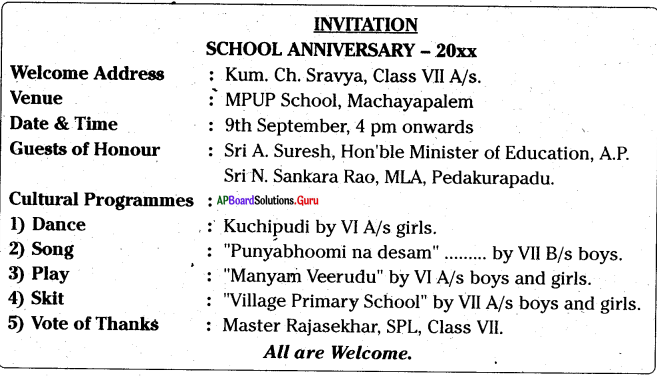
3. Write a story using the following hints.
Shepherd boy – a playful boy – fond of jokes – one day he cried, “Wolf! Wolf! A wolf is killing my sheep.” – villagers went with sticks – the boy laughed – no wolf at all – after some days, wolf came – the boy cried – “ Wolf! Wolf!” – people said, “It is not true, he is making fun of us” – people did not go – wolf killed a. number of lambs.
Answer:
The Shepherd Boy
Once there lived a shepherd boy in a village. Every day he went t9 the hills with his sheep. He was a playful boy. He was fond of jokes. One day he wanted to play a joke with the villagers. He cried, “Wolf! Wolf! A wolf is killing my sheep.”
The people of the village went with sticks. They went to the hills and asked him, “Where is the wolf ?” The shepherd boy laughed. There was no wolf at all. It was a joke.
Some days passed. One day a wolf came. The boy was frightened and cried, “Wolf! Wolf!” He cried many times. The people heard his cries and said, “It is not true, he is making fun of us.” The people did not go to the hills. The wolf killed a number of lambs. The boy was sad.
Moral: Speak the truth always.
These AP 6th Class English Important Questions 1st Lesson Clever Tenali Ramakrishna will help students prepare well for the exams.
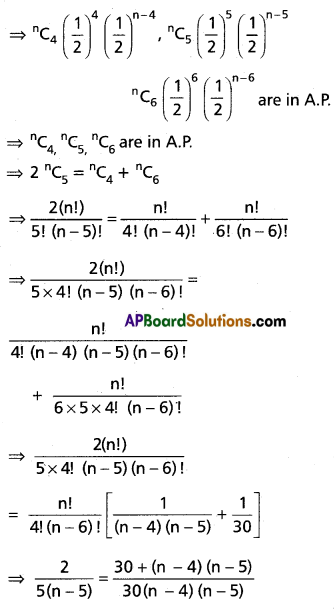
![]()
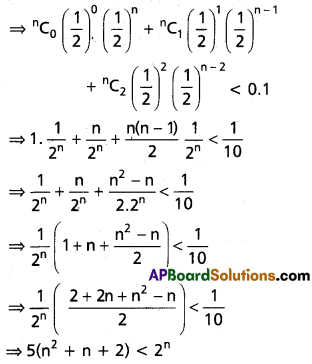
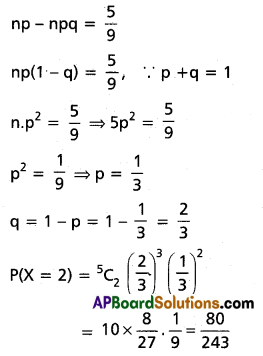
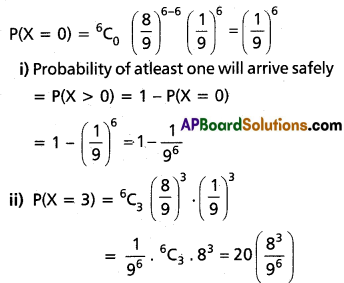
![]()
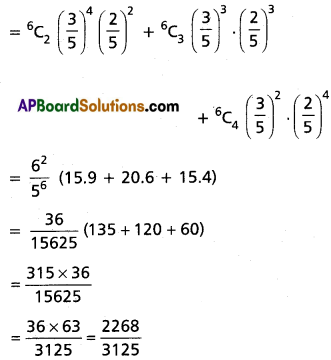

![]()
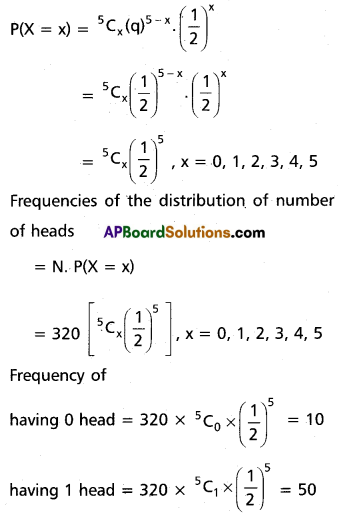
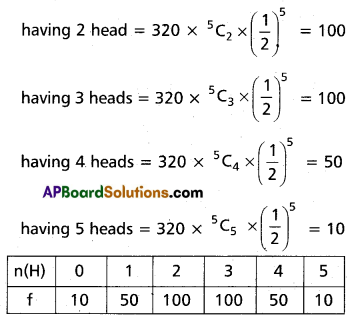
![]()

